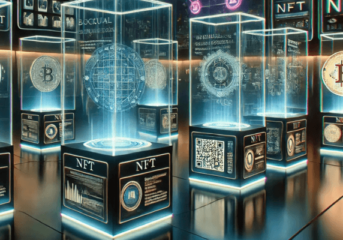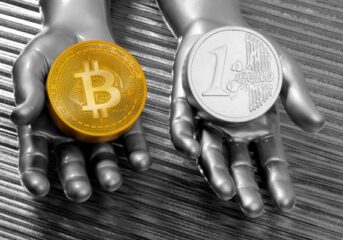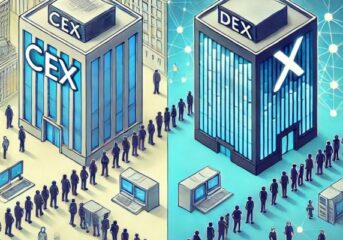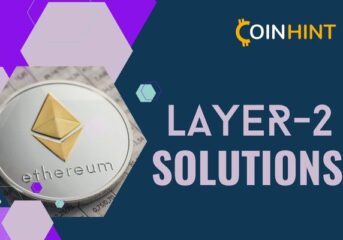Blockchain Technology Explained: An In-Depth Guide
Blockchain emerged as the technology powering Bitcoin when the original cryptocurrency launched in 2009. Its promise of security, trust, transparency, immutability, safe transfer, and efficiency for payments, data, personal records, and ownership quickly made it popular with developers. Today, blockchain is the backbone of thousands of cryptocurrencies and decentralized applications (dApps). Governments and enterprises are exploring it, and it will be one of the foundational technologies of the next iteration of the internet, Web3.
What is Blockchain?
A blockchain is a decentralized digital ledger that can securely record transactions and data across all the participant computers on the network. It uses cryptography and consensus mechanisms to create an immutable record consisting of data blocks.
Key Features of Blockchain
A blockchain is immutable, which means that once a block of transactions is confirmed and secured to the network, it cannot be altered without changing the entire ledger. This provides security.
Transactions are peer-to-peer (directly between two parties) and secured by nodes (computers on the network) using cryptography and consensus mechanisms. Once this happens, a new copy of the ledger is shared with all the network nodes, providing transparency and establishing the blockchain’s decentralized, distributed nature.
Decentralization stems from a blockchain not having a single governing entity. Instead, it’s maintained by the nodes, the computers on the network, and software. However, it’s important to note there are centralized blockchain projects, and large companies are developing their blockchains, over which they have full control.
As well as being secure, blockchains are fast and able to confirm and facilitate cryptocurrency and digital token transactions around the world in seconds.
Blockchains are known to be distributed, decentralized, peer-to-peer, secure, immutable, and fast, and they use cryptography, namely hashing and consensus mechanisms.
They can also be anonymous and are called trustless because they don’t require trusted intermediaries or third parties. Second-generation blockchains onwards have self-managing smart contract capabilities, which allow blockchains to do much more than just record transactions, including hosting dApps.
Why is Blockchain Technology Important?
Blockchain is an important development because it may solve certain issues with digital technology and conventional finance. It’s open, but it’s also secure. It’s the first technology to be able to support digital currencies securely.

History of Blockchain
The anonymous, or pseudonymous, developer Satoshi Nakamoto was the first to bring together the ideas of cryptography, secure digital signatures, proof-of-work, and hashing transactions onto a chain. He did so to make a secure online digital currency, Bitcoin. In 2008, he published the paper “Bitcoin: A Peer-to-Peer Electronic Cash System.” The first version of Bitcoin software was released on January 9, 2009, and the first Bitcoin transfer and the “genesis” block were created three days later. The second cryptocurrency and blockchain was Litecoin in 2011, and Ethereum, the first smart contract blockchain, launched in 2015.
How Does Blockchain Work Step by Step
Understanding Blocks and Chains
Once a transaction is initiated, like sending cryptocurrency, the transaction is broadcast to the blockchain’s network of nodes and authenticated. The transaction is added to a block of transactions chained together through cryptography.
The Role of Cryptography
Blocks of transactions are verified, secured, digitally signed, and recorded using a cryptographic process and a consensus mechanism to a blockchain network. Hashing is one cryptographic method. It converts an input into a fixed-size string of characters that gets recorded. Each secure block on a blockchain contains the hash of the previous block.
Blockchains also use public-key cryptography, and cryptocurrency owners use their keys to sign and send crypto transactions digitally.
Consensus Mechanisms
A consensus mechanism is a set of rules that decide how blockchain network nodes agree about the state of the blockchain and the validity of transactions. Bitcoin uses a proof-of-work (PoW) consensus mechanism. Ethereum, in contrast, uses proof-of-stake (PoS). Consensus mechanisms vary from blockchain to blockchain, and there are several types, with new ones emerging as developers find ways to improve blockchains.
How is Blockchain Used?
Blockchain’s primary use began as the underlying technology of cryptocurrencies. Now, it powers dApps and DeFi projects that use cryptocurrencies and tokens.
Developers, companies, financial institutions, and governments have all seen the potential of blockchain for currency exchange, securing data, proof of ownership, and a mechanism for transferring and protecting intellectual property rights. Blockchains can be used to manage secure digital databases and maintain digital records of all types.

Applications of Blockchain Technology
This still nascent technology has potential for every industry. In finance, it can enable secure real-time transactions. Assets of any kind can now be digitalized and tokenized and stored or traded using blockchain. Blockchain-based tokens can show proof of ownership or identity or be verifiable records of qualifications or certificates. Medical records can be secured and shared between patients and healthcare professionals, and blockchain can prove the provenance of goods and materials. The list is almost endless.
Types of Blockchain
-
Public
A public blockchain is transparent and open to anyone to use, say by owning or sending cryptocurrency. Decentralization and the consensus mechanism usually make these networks beyond the control of a single developer or company.
-
Private
These are also known as managed or permissioned blockchains, where a single entity is in control and decides who can be a node on the blockchain. Public access is restricted, and they are only partly decentralized, if at all.
-
Consortium
This type of blockchain is “permissioned” and controlled by a consortium rather than public or controlled by a single entity. They can be more decentralized than private blockchains but are restricted, for example, to between a group of companies.
-
Permissioned
These are blockchains that limit who can access and use them. Private blockchains are usually permissioned, and some public networks can be too.
Advantages and Challenges of Blockchain
Benefits of Using Blockchain
Blockchain’s benefits are decentralization, transparency, immutability, efficiency, security, speed, lower fees without third parties, and trustlessness.
In finance, transactions can happen securely in seconds, and blockchains can be incredibly difficult to hack or commit fraud against because every block would need to be changed.
These same qualities make blockchain attractive for sending and protecting data and many other applications. Blockchains can improve data traceability in a business network, and immutable timestamps can prove an event or exchange occurred.
Limitations and Concerns
One problem with blockchain is determining what happens on a public network, if something goes wrong, and who is responsible. Correcting errors can also be a problem, and private and public keys can be lost easily for users. There are also storage and computational issues if a blockchain is large, but a copy needs to be kept on every node. There is also the risk of a 51% attack if a group of users gain too much power over a network.
The technology is also still very new. It has lots of potential, but developers are still working to answer the blockchain “trilemma” of being secure, scalable, and decentralized. For example, Bitcoin is secure and decentralized, but transactions can be slow.
What are the benefits of blockchain over traditional banking?
Blockchain and digital currencies can offer lower transaction costs (without the need to support banks), fast transaction times even across borders, and enhanced security. Digital currencies can make financial services available to the unbanked. However, there are issues such as regulatory compliance, consumer protection, and then scalability, and other technical issues and complexities that blockchain developers are working on.
5 Steps to Your First Blockchain Application
There are a few steps for anyone considering building a blockchain application or a dApp. dApps can be built on existing smart contract blockchains that offer the functionality, like Ethereum.
1. Develop a dApp
dApps are built by blockchain developers. Some blockchains do offer dApp building tools that are easier to use. dApps require a development environment, and a testnet. Also, smart contracts have to be designed and coded.
2. Build Security and Compliance
Even though blockchains can be secure, dApps can have vulnerabilities, and cryptography, consensus, and cryptos or tokens are all complex to develop and manage. dApp builders may need to consider data privacy and regulatory compliance.
3. Remember the User Experience
dApps use blockchain behind the scenes but can have conventional-style user interfaces that need careful development.
4. Test and Debug
Although there are off-the-shelf dApp building tools, testing and debugging a new project will be vital. dApp builders will also need to consider blockchain technology’s drawbacks and risks.
5. Launch a dApp
Once a dApp is built, its launch and marketing can resemble other business projects. When dApps are ready, they go from testnet to mainnet deployment, where they can be used.
This is a simplified outline. A dApp or business’s purpose will define the steps to ensure success. Building a blockchain application for a business may be far more complex, requiring in-house teams and experts on hand.
The Future of Blockchain
Blockchain is an exciting new technology with a myriad of use cases. The tokenization of assets and data makes it highly attractive for dApps, games, the metaverse, and the anticipated interconnectedness of Web3.
As blockchain is the backbone of cryptocurrencies, these assets can determine the success and development of a network. Likewise, a fast, secure, scalable blockchain may determine which cryptocurrency garners more use. For extended reading on crypto vs blockchain.
The advantages may be substantial for business, finance, governments, and health care, but blockchain’s challenges and somewhat limited adoption thus far mean many projects are still in development.
Final Thoughts
The Coin Hint team contends that cryptocurrencies and blockchain have immense potential that is still being explored and developed. As both mature and innovate, the actual use cases and level of adoption will grow.
FAQ
-
What is a blockchain, in simple words?
A blockchain is a digital database shared across multiple computers that provides the technology and security for cryptocurrencies, digital assets, and other use cases.
-
Is blockchain technology sustainable?
Blockchain is extensively used in the cryptocurrency, DeFi, and dApp spaces. Developers are constantly working to improve the technology to foster greater adoption.
-
How many blockchains are there?
There are over 1,000 blockchains, some powering cryptocurrencies and dApps and others being developed by organizations and companies for other purposes.
-
How secure is blockchain technology?
Blockchain is arguably secure, but it depends on the network and build, and they are not completely impervious to hacks and attacks.
-
Can blockchain be used beyond cryptocurrency?
Yes, blockchain has many use cases, for example, in business and industry, healthcare, government, and finance.
-
How is blockchain used in banking?
Numerous banks are investigating their versions of digital currencies, called central bank digital currencies (CBDCs), and their blockchain applications.
-
What is the difference between public and private blockchain?
Anyone can use public blockchains. For example, Bitcoin can be bought or sold by anyone interested. In contrast, private blockchains are restricted to permissioned or authorized parties, for instance, an enterprise blockchain developer in the shipping industry.







